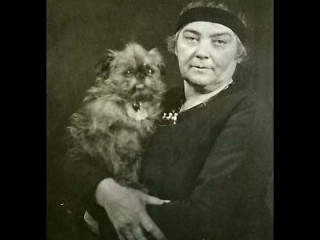
Emily Carr biography
Date of birth : 1871-12-13
Date of death : 1945-03-02
Birthplace : Victoria, British Columbia, Canada
Nationality : Canadian
Category : Famous Figures
Last modified : 2011-04-10
Credited as : Artist painter, and writer,
Emily Carr was a Canadian painter and writer without equal as an interpreter of the native peoples and forests of British Columbia.
Emily Carr was born in Victoria, British Columbia, on Dec. 13, 1871. About 1888 she persuaded her family guardian to let her study at the San Francisco School of Art. Returning to Victoria about 1895, she set up her studio in a barn on the family property and began to teach. In 1897 she made her first sketches of a native village, while on a visit to Ucluelet on Vancouver Island with a missionary friend. From her teaching in Victoria and Vancouver she saved enough money to study in England from 1899 to 1904, but her pictures of totem poles, painted on summer trips up the coast after her return to Victoria, are barely more than competent records of their subjects.
More influential on Carr's development was a period of study in France from 1910 to 1912, when she adopted the intense color of the Fauves. The new style of her French paintings shocked her former patrons in Victoria and Vancouver, and her painting classes dwindled. Finally, she was forced to open a rooming house, raise sheep dogs, and manufacture crude pottery to make ends meet.
The ethnologist Marius Barbeau first became interested in Carr's paintings of totem poles in 1921, and through him she lent 50 of them for an exhibition of West Coast Indian Art at the National Gallery of Canada in 1927. On her way to Ottawa for the opening she met the Group of Seven in Toronto, including Lawren Harris, whose bold simplifications of landscape forms were to inspire a new monumentality in her own paintings. From then on her work developed in mastery, and the timid records of native villages gave way to powerful interpretations of the forest itself, in which the totem poles united with their setting as expressions of the force of nature. In her later work, often painted on large sheets of brown paper, the rhythmic brush strokes give a pulsing vitality to forest, sky, and sea.
When failing health made expeditions into the forest impossible, Carr turned to writing, and her first book, Klee Wyck, won the Governor General's Award in 1941. In this and later books, such as The Book of Small (1942) and The House of All Sorts (1944), she tells with gusto and wry humor some of her adventures among her Indian friends, her animals, and the inhabitants of her rooming house. When she died in Victoria on March 2, 1945, she left a fine collection of her paintings to her native province, which is housed in the Vancouver Art Gallery.
The chief source of information on Carr's life is her own writings, particularly Growing Pains: The Autobiography of Emily Carr (1946), published after her death. The National Gallery of Canada, Ottawa, Emily Carr: Her Paintings and Sketches (1945), contains a biographical sketch, a study of her works, and plates. General works which discuss her include Richard S. Lambert, The Adventure of Canadian Painting (1947); Donald W. Buchanan, The Growth of Canadian Painting (1950); and J. Russell Harper, Painting in Canada: A History (1966).
















